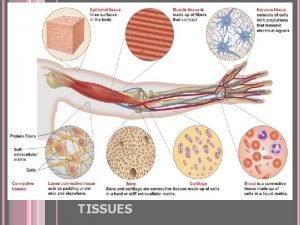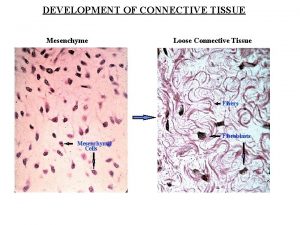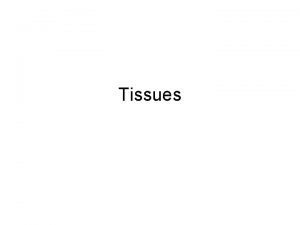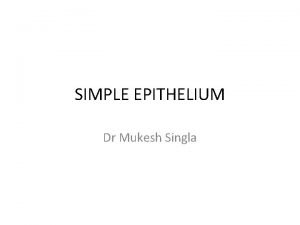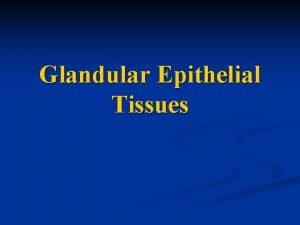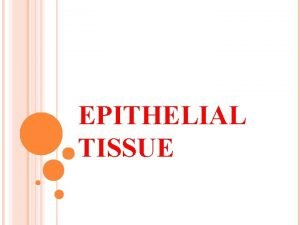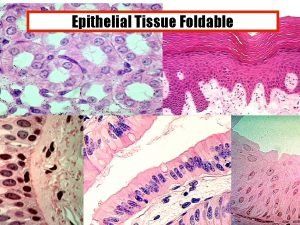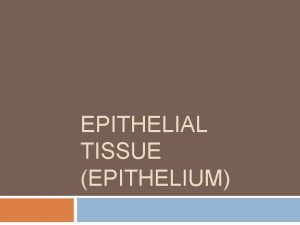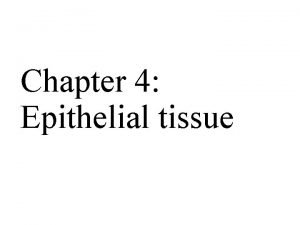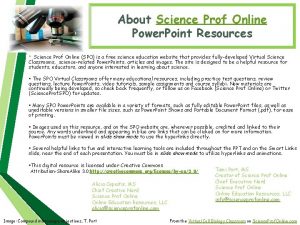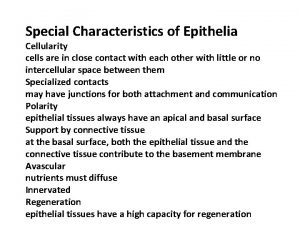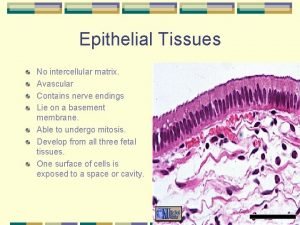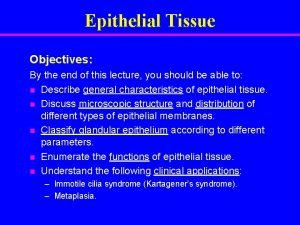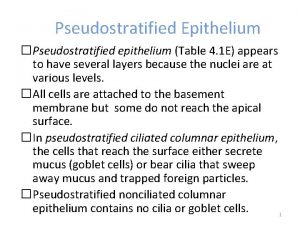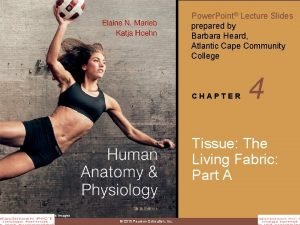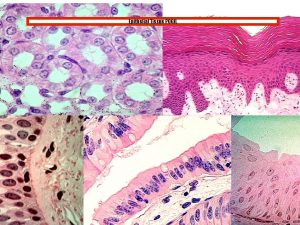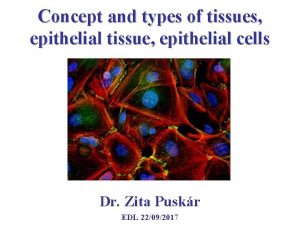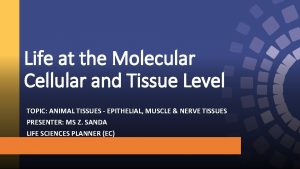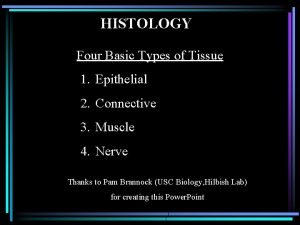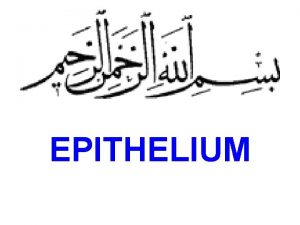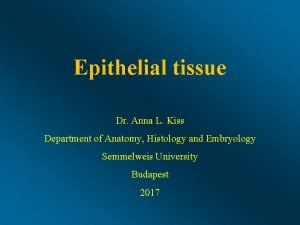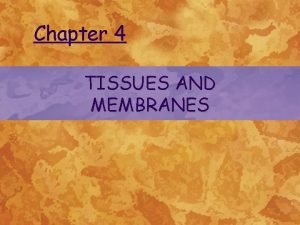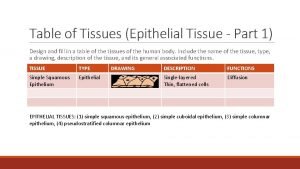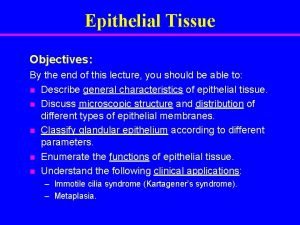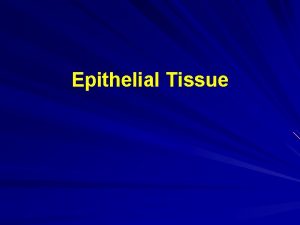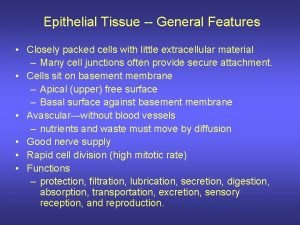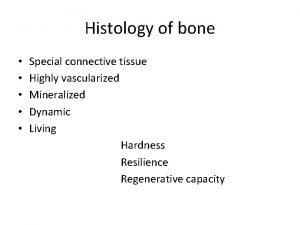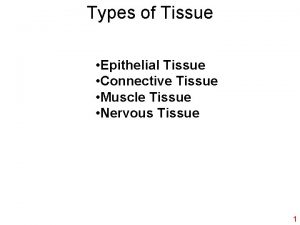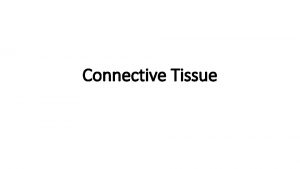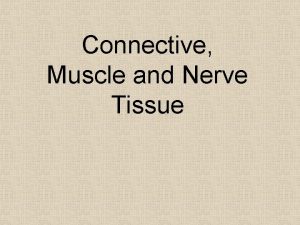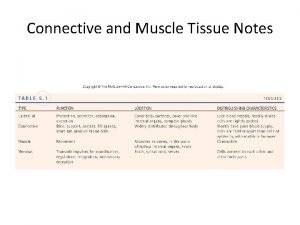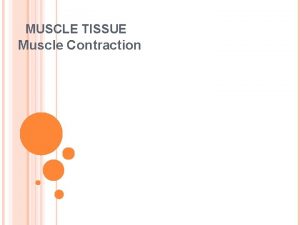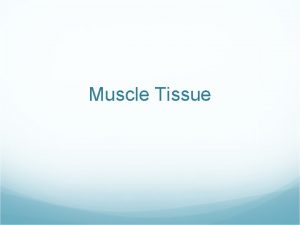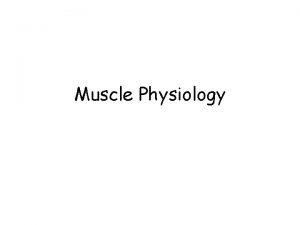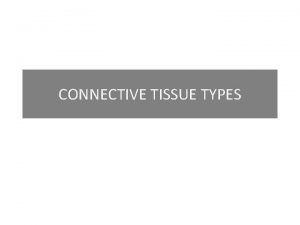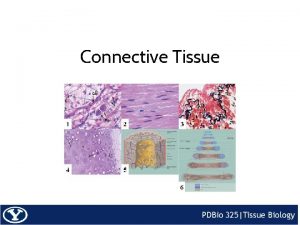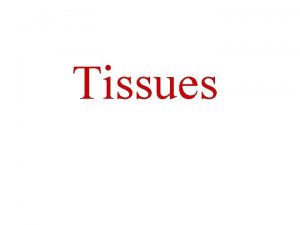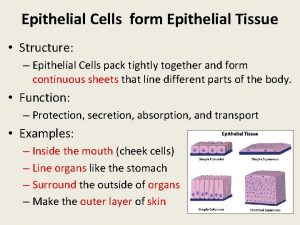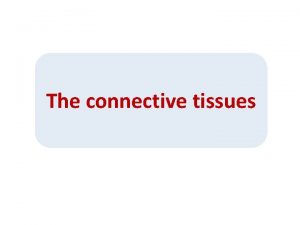Four One Tissue Types Epithelial Connective Muscle Nerve






























- Slides: 30

Four + One Tissue Types Epithelial Connective Muscle Nerve Membranes

Epithelial Tissue Closely joined, little or no intercellular material Avascular: no blood vessels - Covers surfaces - Lines cavities and organs - Forms glands

Covering and Lining Epithelial Tissue Simple Squamous -Single layer -Flattened cells -Allow diffusion and filtration Example Locations: air sacs in lungs, blood vessels

Covering and Lining Epithelial Tissue Simple Cuboidal -Single layer -Cube-shaped cells - Allow secretion and absorption Example Locations: kidney tubules, skin gland ducts

Covering and Lining Epithelial Tissue Simple Columnar -Single layer - Tall cells Example Locations: digestive tract, small bronchi, uterine tubes

Covering and Lining Epithelial Tissue Stratified Squamous -Multi-layered -Flat cells -Protects tissues where abrasion is frequent Example Locations: lines esophagus, forms epidermis

Covering and Lining Epithelial Tissue Pseudostratified Columnar -Single layer -Appears multi-layered -Irregular cells -Secretes mucus Example Locations: ducts of large glands, trachea

Covering and Lining Epithelial Tissue Transitional -Multi-layered -Cuboidal or columnar cells topped with dome shaped cells that look more squamous when stretched Allows stretching Example Locations: ureters, bladder

Glandular Epithelium Fxn: Secretion Exocrine: Ducts – body surface or cavity Ex: sweat glands, salivary glands Endocrine: Extracellular space – bloodstream - body Ex: pituitary gland, adrenal glands

Connective Tissue Glue tissues in place Protect against infection Widely scattered fibroblasts Create lots of intercellular material - nonliving - mixture of sugars, proteins and interstitial fluid

Protein Fibers Collagen: Flexible Resists stretching strong, thick, wavelike fibers (dense C. T. )

Protein Fibers Elastin/Yellow: elastic extensible thin fibers (loose/areolar C. T. )

Protein Fibers Reticulin: chemically similar to collagen resists physical stress not abundant thin, branching fibers

C. T. Proper Loose: -Areolar -Adipose -Reticular Dense: -Regular -Irregular

Loose C. T. Proper Areolar: Structure: - Few fibers, lots of space between - Contains all 3 fiber types - Contains macrophages and mast cells Function: -Anchors body parts -Confers immunity -Holds body fluids

Loose C. T. Proper Adipose: Structure: - Specialized rounded fibroblasts - Little intercellular material Function: -Stores fat reserves fuel insulation cushions

Loose C. T. Proper Reticular : Structure: - Resembles areolar tissue -Only contains reticular fibers -Found in lymph nodes, spleen, bone marrow Function: -Forms soft bed for other cell types

Dense C. T. Proper Regular : Structure: -Abundant parallel fibers Function: -Withstands force when applied in one direction -Attach muscles to bones or other muscles (tendons) -Attach bones to bones (ligaments)

Dense C. T. Proper Irregular : Structure: -Abundant irregular fibers Function: -Withstands force when applied in many directions -Attach organs to each other and other structures

Cartilage Chondrocytes in firm matrix -Hyaline -Elastic -Fibrocartilage

Hyaline Cartilage Structure: -Abundant in body -Bluish -Reinforced with few collagenous fibers -Resists compression Function: -Forms template for growing bones -Forms joint surface between opposing bones -Forms upper respiratory tract (trachea, larynx) -Forms costal cartilage

Elastic Cartilage Structure: -Yellowish -Reinforced with mostly elastic fibers -Allows flexibility Function: -Forms frame for ears, nose and epiglottis

Fibrocartilage Cartilage Structure: -Similar to hyaline cartilage -Reinforced with collagenous fibers -Absorbs compressive shock Function: -Forms pads between vertebrae -Forms pads associated with hyaline cartilage in knee joints

Bone -Spongy -Compact

Blood Related Tissue Softest C. T. Cells surrounded by matrix -Hematopoietic (red marrow) -Lymphoid -Blood

Hematopoietic Tissue -Stems cells produce all types of blood cells -Found in many bones

Lymphoid Tissue -Site of lymphocyte and monocyte maturation -Found in lymph nodes, tonsils, spleen, thymus of children

Blood Tissue -Consists of formed elements & fluid matrix Formed Elements: red blood cells white blood cells platelets Fluid Matrix dissolved fibers that don’t become visible until clotting

Muscle Tissue Cells have long proteins in cytoplasm - allow cells to contract 3 Types: -Skeletal Muscle -Smooth (Visceral) Muscle -Cardiac Muscle

Nervous Tissue 2 General Types: -Neurons -Neuroglia
 Types of tissue
Types of tissue Loose connective tissue extracellular matrix
Loose connective tissue extracellular matrix Dense irregular connective tissue cells
Dense irregular connective tissue cells Layers of epithelial tissue
Layers of epithelial tissue Layers of epithelial tissue
Layers of epithelial tissue Epitelio glandular holocrino
Epitelio glandular holocrino Simple squamous epithelium location
Simple squamous epithelium location Epithelial tissue
Epithelial tissue Kidney epithelial tissue
Kidney epithelial tissue Zonula occludens
Zonula occludens Kidney epithelial tissue
Kidney epithelial tissue Passageway
Passageway Epithelial avascular
Epithelial avascular Epithelial tissue
Epithelial tissue Four basic tissues
Four basic tissues Stratified columnar epithelium
Stratified columnar epithelium Epithelial tissue with goblet cells
Epithelial tissue with goblet cells Pogil epithelial tissue histology
Pogil epithelial tissue histology Epithelial tissue
Epithelial tissue Voluntary muscles
Voluntary muscles Epithelial tissue
Epithelial tissue Part of an animal
Part of an animal Epithelial tissue
Epithelial tissue Epithelial tissue
Epithelial tissue Secretory tissue
Secretory tissue Protein fibers in connective tissue
Protein fibers in connective tissue Table tissue design
Table tissue design Epithelial tissue
Epithelial tissue Tissue
Tissue Epithelial tissue
Epithelial tissue Is epithelial tissue highly vascularized
Is epithelial tissue highly vascularized
